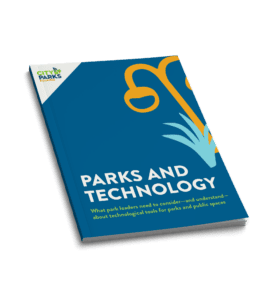What park leaders need to consider—and understand—about technology for parks and public spaces.
New technologies are revolutionizing how urban parks and green spaces are managed and analyzed, offering insights into usage patterns, improving operations, and creating more vibrant visitor experiences. But there’s a growing need for technologies that go further by helping us understand park use, connect people to nature and inclusive stories, support biodiversity, empower community advocacy, and ensure equitable park investments.
As technology solutions evolve, park leaders are grappling with complex questions: How effective are these tools? What about privacy and ethical concerns? How can partnerships make implementation more affordable?
In our new Parks and Technology report, we are cutting through the noise to help you navigate the opportunities, benefits, and challenges of using technology in urban parks. You’ll learn how technology can help you make data-driven decisions, manage park spaces, foster community engagement, advance equity, and expand storytelling about place. This report is your guide to harnessing tech to create smarter, more inclusive parks.

Using Technology in Parks
We have developed a framework to help you better understand people and places, as well as evaluate policy, and use technologies that align with your organization’s vision, goals, and values. This approach includes:
- Defining the problem or challenge new technologies are meant to address
- Building trust by engaging the community, other stakeholders and partners, and key decision-makers within your organization
- Asking peers and partners about their tech solutions and thoroughly exploring available data collection processes and policies within your organization to inform questions to potential providers
- Following up with stakeholders, partners, and organizational leaders about the selection of solutions and how their input and concerns were addressed
- Communicating with the public and illustrating with signage the type of technology in use, how it is implemented, why it is being used, and where you can learn more
- Planning for periodic review to see if the technology tool is accomplishing its intended purpose
Support for this Initiative is Provided By:

